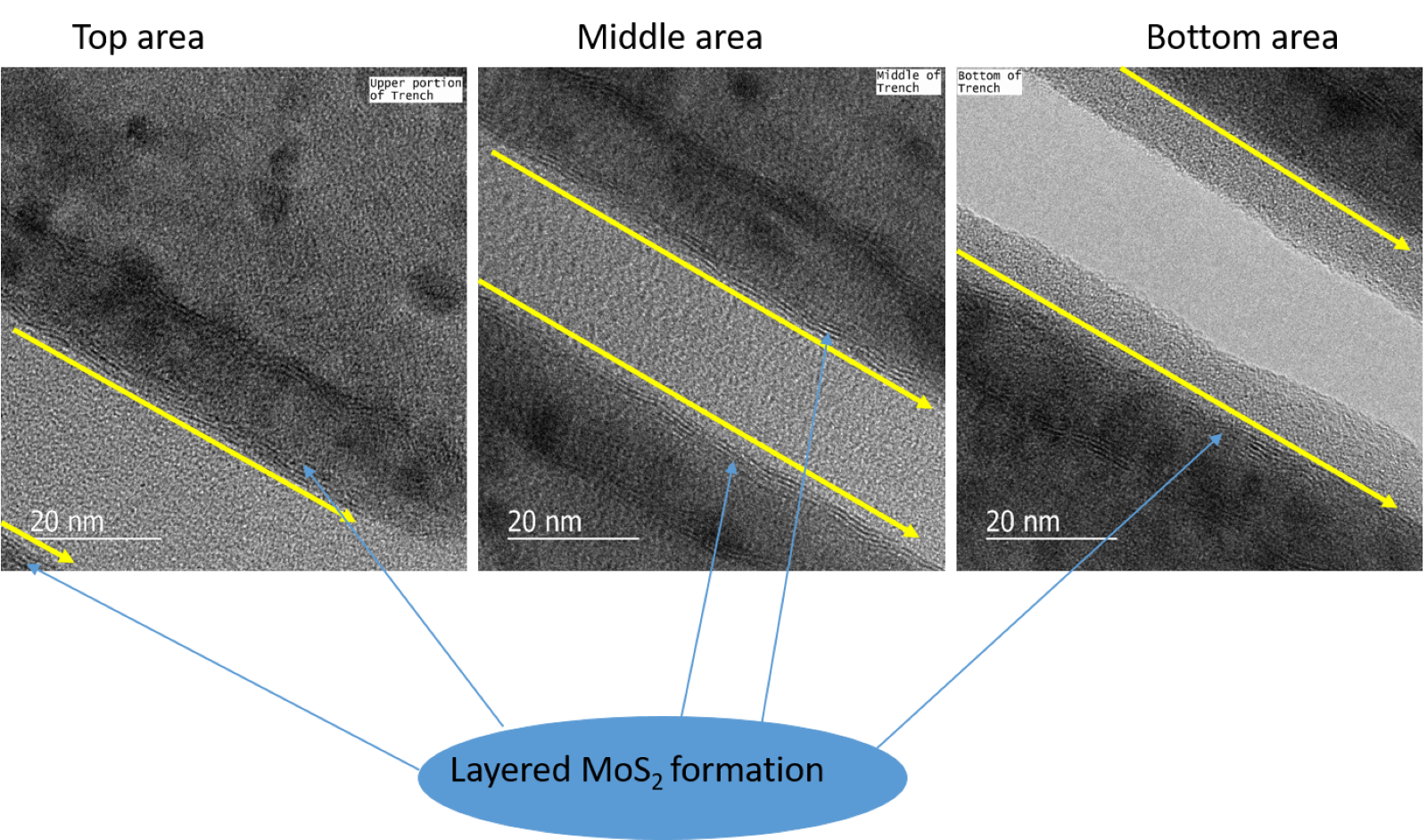Copper interconnects in present integrated circuits require ultra-thin diffusion barriers to prevent intermixing of Cu with surrounding dielectric materials. In next generation circuits created by very large scale integration, it is expected that ultra-thin (<4 nm) uniform and conformal barrier/liner materials on high-aspect-ratio complex structures are needed because conventional TaN barriers have reached their physical and electrical limits. Here, we plan to evaluate layered transition metal dichalcogenide (LTMD)
material barriers for Cu diffusion and as a seed layer for the bulk Cu and other emerging metal interconnects. Our goal here is to evaluate the diffusion barrier properties of LTMD interconnect metal under extreme conditions for 3D integration. We will then select the combination of LTMD barrier and bulk metal materials that work best for achieving low line resistance and preventing electromigration. Further, we will focus on in-situ transmission electron microscopy to perform operando imaging studies to monitor the nucleation and successive evolution of the electromigration. The successful demonstration of LTMD diffusion barriers will establish new capabilities at the lab and should be of interest to the semiconductor microelectronics industry.
[1] A. U. Mane et al., Atomic layer deposition of molybdenum disulfide films using MoF6 and H2S, J. Vac. Sci. Technol. A: Vacuum, Surfaces, and Films 36, 01A125 (2018).
